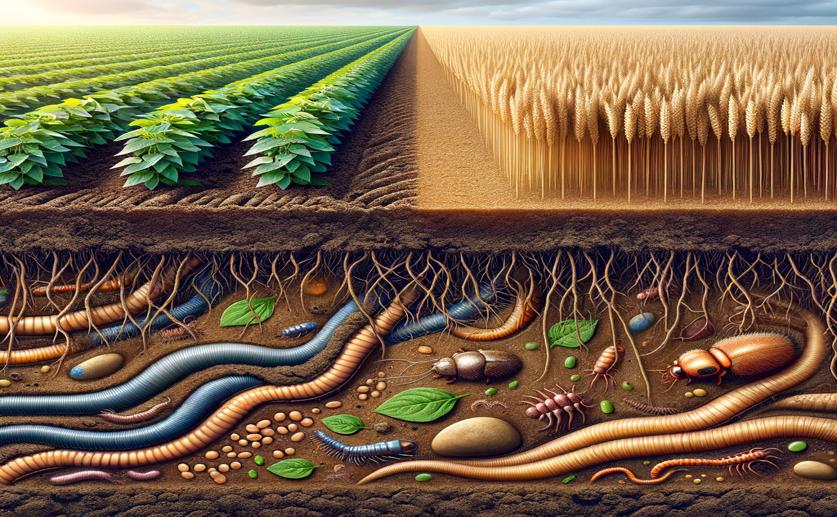
Assessing Soil Health in Soybean-Wheat Farms with Various Tillage Methods
Jim Crocker
23rd March, 2024

Image Source: Natural Science News, 2024
Key Findings
- Study in Kota, India found organic farming improves soil health
- Organic practices increased soil carbon and beneficial microbes
- Chemical farming yielded more crops but may harm soil long-term
AgricultureEnvironmentPlant Science
References
Main Study
1) Comparative analysis of soil quality and enzymatic activities under different tillage based nutrient management practices in soybean-wheat cropping sequence in Vertisols.
Published 21st March, 2024
https://doi.org/10.1038/s41598-024-54512-z
Related Studies
2) Soil and the intensification of agriculture for global food security.
3) Carbon and nitrogen mineralization in Vertisol as mediated by type and placement method of residue.



 9th March, 2024 | Jim Crocker
9th March, 2024 | Jim Crocker